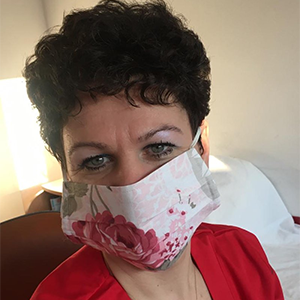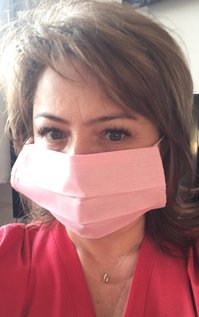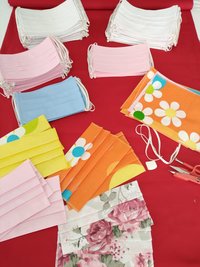Women Respond to an Urgent Call from a Physician
Local hospital in Campina receives nearly 12 dozen cotton face masks stitched by two church members within two days.
Inter-European Division (EUD)
 [Romania] Cora works as a doctor at the District Hospital of Campina, located in the territory of the Muntenia Conference. She saw the current need for masks in the hospital and told her father about it. Her father, who is a Seventh-day Adventist pastor, had an idea and asked two ladies who are very active in Women’s Ministries in the church to help the nurses and doctors of that hospital.
[Romania] Cora works as a doctor at the District Hospital of Campina, located in the territory of the Muntenia Conference. She saw the current need for masks in the hospital and told her father about it. Her father, who is a Seventh-day Adventist pastor, had an idea and asked two ladies who are very active in Women’s Ministries in the church to help the nurses and doctors of that hospital.

Violeta and Luminita, both very skilled at sewing, started making masks for the medical staff at the hospital. They downloaded a pattern from the Internet, bought some cotton material, and sewed the first batch of 20 masks. The pastor took the masks to the hospital where they were very much appreciated. Because the masks were made of cotton, they could be sterilized before the first use and then sterilized before being reused over and over. The next day Violeta and Luminita made 120 more face masks. In just two days these two women had made 140 masks for the medical personnel of their local hospital.
And the work goes on. May God bless us all.
Reported by Luminita Ionescu, WM director, Muntenia Conference
Published in Mosaic newsletter, 2020 Q1&2, Spring issue

Do you want to sew face masks?
Before you begin, research who needs masks, the local guidelines, and the material desired. Handmade face masks are being accepted during the coronavirus crisis when the need far exceeds available sterile supplies.
If the face mask style shown here (made by these two generous women in Romania) is not what your local medical personnel require, they may be exactly what the essential worker in your area needs. Face masks shaped snugly to the face, such as industrial N95 masks, are better protection for people at greater risk.
Recently, sewers everywhere have been experimenting. They have created various patterns, including how to fit the mask snugly across the nose and face, and have uploaded video tutorials on social media demonstrating the steps for constructing masks. Some makers have devised ways to sew a pocket lining to hold a detachable part that is removed for washing. This insert is cut from an industrial filtering material such as allergen filters made for heating and air conditioning systems. If you cannot obtain elastic to wrap around the ears, you will find patterns with fabric ties. Each maker uses the supplies she has at home or is able to purchase easily.
Remember to keep your hands washed and your sewing table sanitized as you work. Pray for God's protection over each person who wears a mask you stitch. Protect the finished masks in clean plastic bags. And above all, stay safe and healthy and put your trust in Jesus Christ, the divine Physician, and our Lord and Savior.


